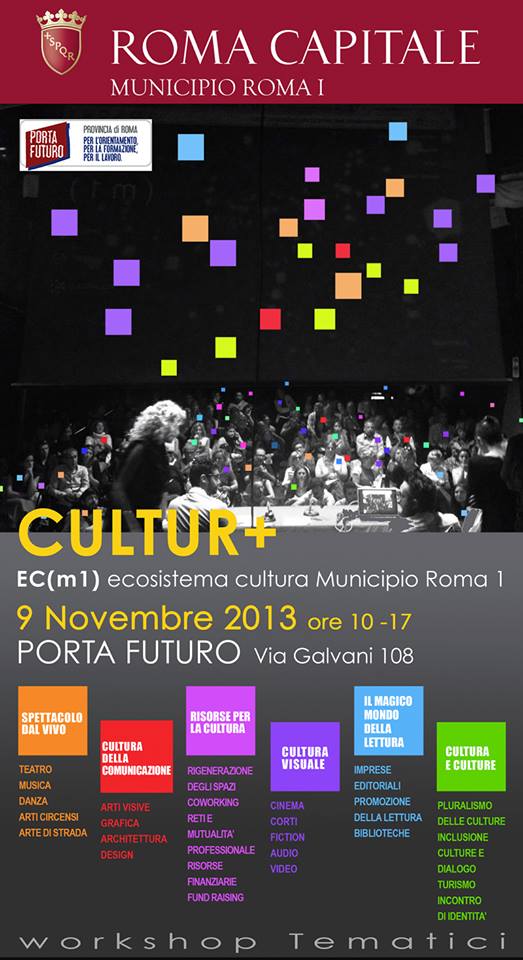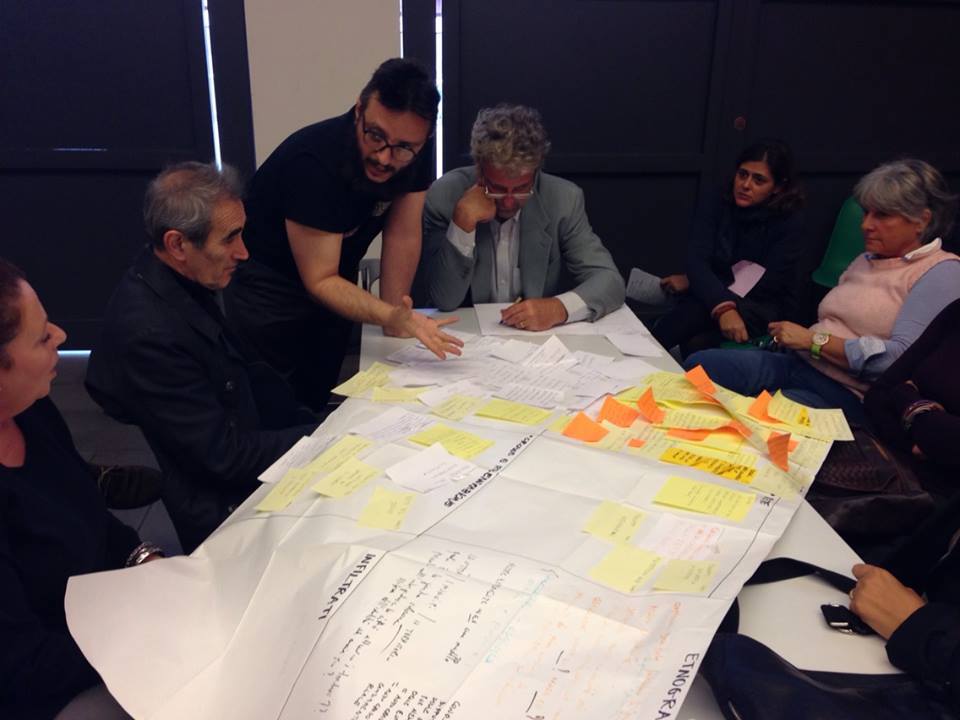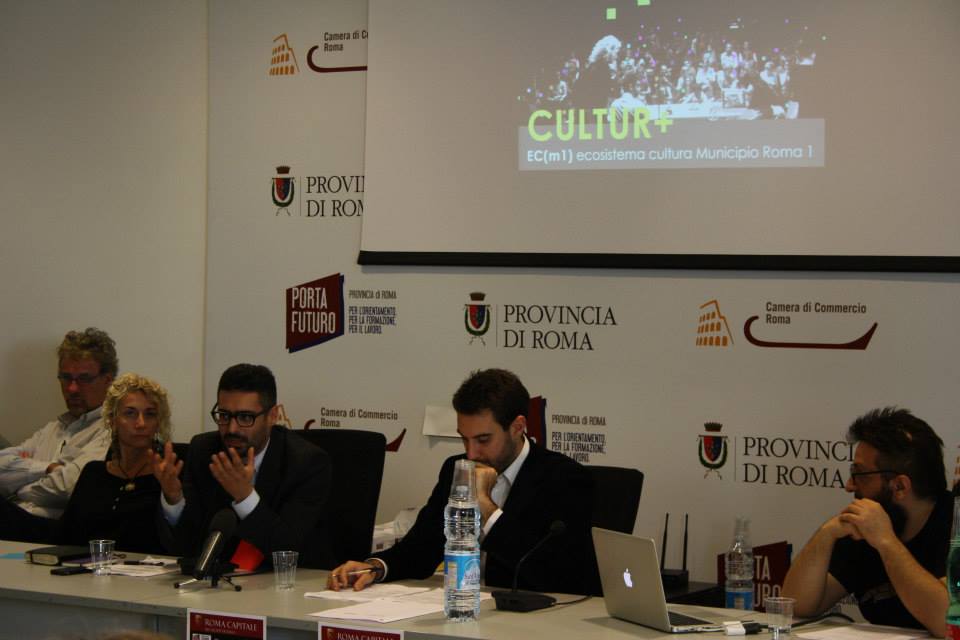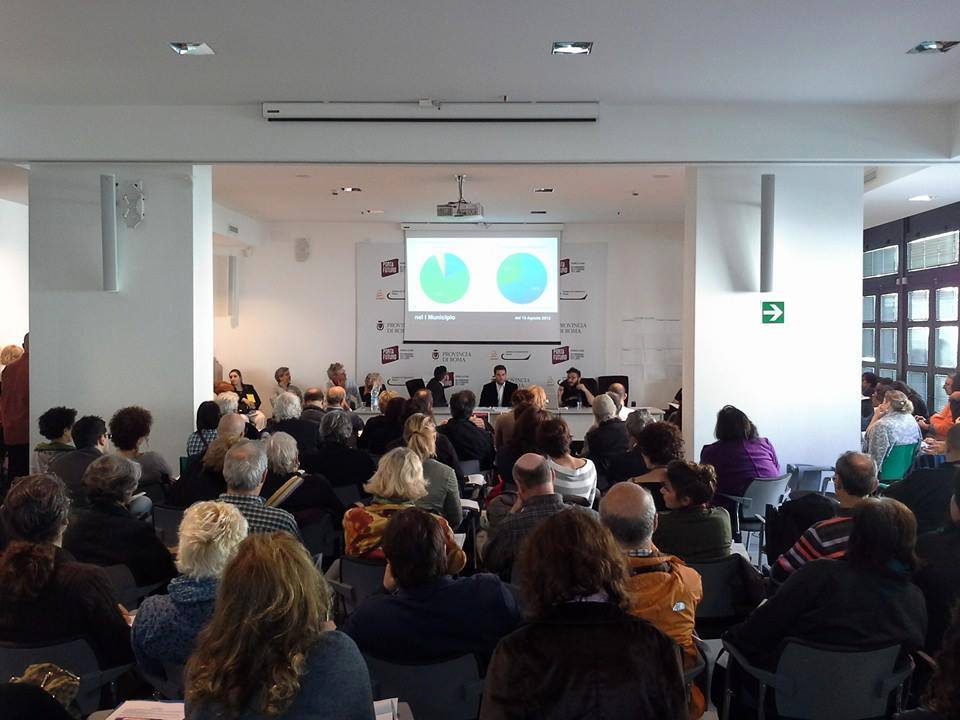EC(m1) – The Cultural Ecosystem of the city of Rome
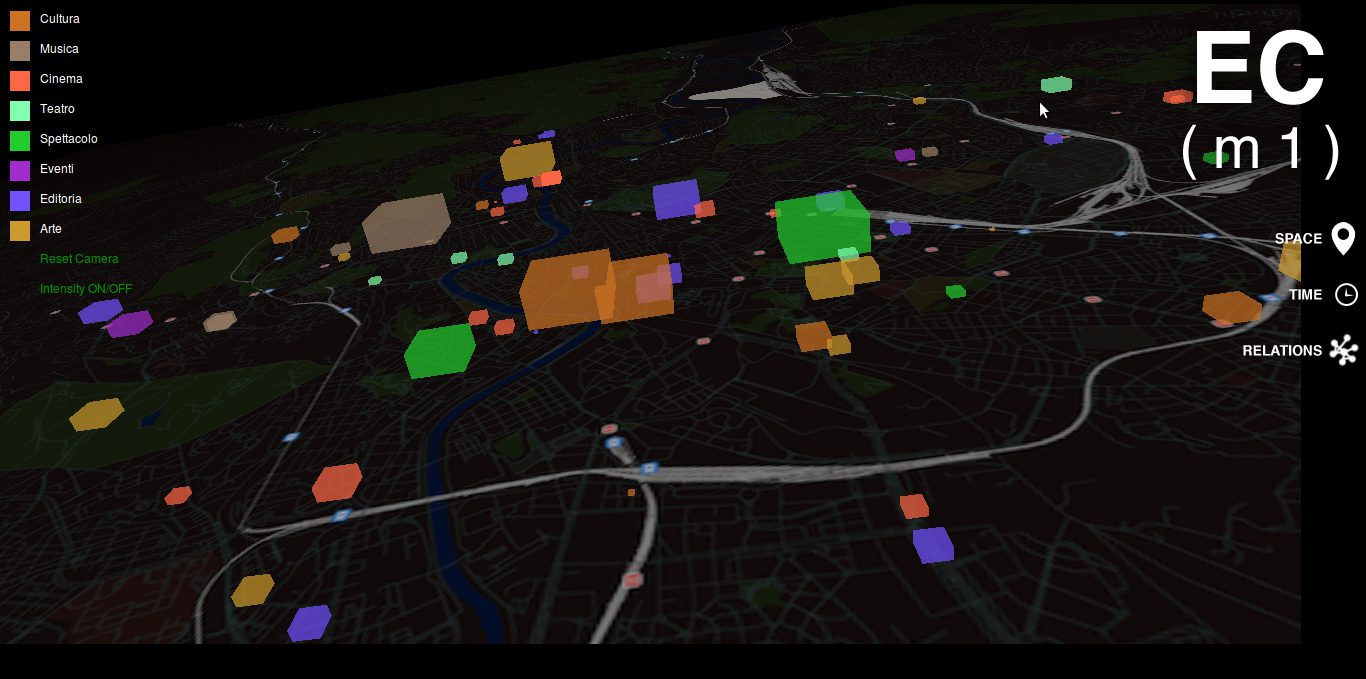
Project
EC(m1), created in 2013, is the first Human Ecosystems experimental application focused on the city environment.
This project employs HER technologies to capture the public activity of cultural operators and citizen of Rome, who participate, evaluate, discuss and express themselves on social networks about culture. The aim is to understand and analyze the topics of online conversation and the emotional states expressed.
EC(m1) has been commissioned by the Cultural Council of the I Municipality of Rome, featuring four interactive visualizations in Real Time: Space, Time, Emotion, Relation.
The project supported Cultur+, the participative cultural policies of the I Municipality of Rome, creating radical experimentations through “data driven” workshops, where hundreds of operators have been involved in the territory.
Early evidence
The main results of the first six months of monitoring are the following:
1. Abundance of operators, their poor interconnection and a massive amount of outsiders.
- More than 7000 operators have identified, together with a huge branch of active population in culture. That one corresponds to non-formalized cultural actors involved with music, art and cultural activities in very different ways (from food bloggers, to writers or makers);
- Few operators are highly interconnected with each other;
- Less than 10% of the actors create more than 50% of the good communicated and appreciated activities on social networks;
- Despite some exceptions, the operators work by their own (about 34 %) or in collaboration with a maximum of 2 others operators (about 25%);
- Almost all the operators (around 86%) do not communicate in a collaborative and/or synergic way with the others ones.
2. Low-interest in discovery: citizens take part in events organized by few operators.
- Most of the audience takes part in events promoted by only one operator (12%) or by 2-5 operators ( 49 %);
- Data radically change according to the price of the events: regarding non-free events, the audience that declares to attend events organized by only one operator increases at 62%;
- This kind of result needs to be collecgìted and analyzed seasonally; the reason is that every season new operators forme and groupe together, also due to the rise of new trends that are able to influence in a crucial way the cultural landscape of the city.
3. The niches working as interconnectors among different communities.
- Niches of subjects capable to take on the role of “bridge” are clearly distinguishable. In their daily lives, they express a highly interest for a vast number of operators and different audiences, therefore, they are able to build natural bridges among different communities;
- Bridges are different from the “influencers”, which are subjects capable of augmenting the visibility and importance of contents, thanks to their reputation or the number of of contacts;
- While influencer are more rare, bridges are more widespread among population. By evidence they generate interests capable to go through different audiences and to create thematic mobility.
4. A limited but present mobility.
- Comparing the places of origin with the different placees of cultural fruition, a limited but present level of mobility emerged ffrom the analysis;
- Setting tourists aside, about 28% of the subjects move in 3-5 different districts in order to attend events, whereas only 3% of them does not move from their district;
- An interesting phenomenon is the “one-direction movement”, according to which around 30% of the observed citizens state to take part to events set in only one district, that possibly corresponds to the one in which they live.
- .
EC(m1): the visualizations
Italian press
Repubblica.it: “In I Municipio si incontra la rete della Cultura”
La Stampa: “OpenData per la cultura, EC(m1) fotografa il fermento romano”
Artribune: “La cultura è un ecosistema: parola di Art is Open Source”
DoppioZero “Ecosistemi e fruizione. Le mappe di Persico e Iaconesi tra il locale e il globale”
Che Futuro “EC(m1), una nuova sorgente di Open Data nel primo Municipio di Roma”
